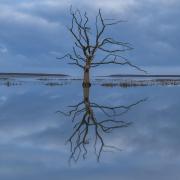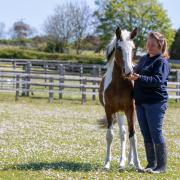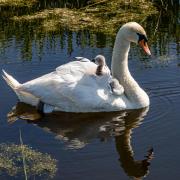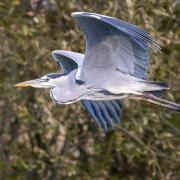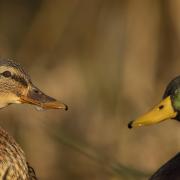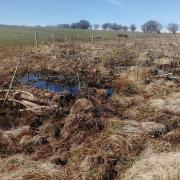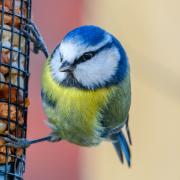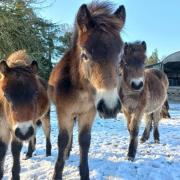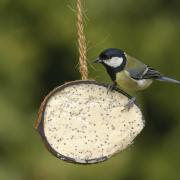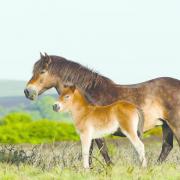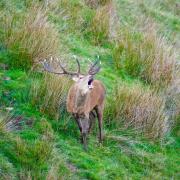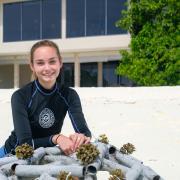Somerset Wildlife Trust's Dr Mark Ward and Living Seas ambassador Nigel Phillips have combined forces to increase awareness of the county's surprisingly spectacular marine environment
Many people perceive the Somerset coast as cloudy red water, acres of mud and shingle and a featureless, grey shore covered in a light coating of silt. Maybe because of this, naturalists have often focused more on the county’s varied terrestrial habitats rather than its coastal waters. As part of the nationwide Living Seas Campaign, however, the Somerset Wildlife Trust wants to change this perception with a new initiative to increase awareness of the county’s amazing marine environment.
The Bristol Channel experiences one of the highest tidal ranges in the world and with the influence of swells from the Atlantic Ocean this makes it very much a marine environment. However, the Somerset coast also forms the southern shore of the massive Severn Estuary, with up to 10 million tons of silt moving up and down it at any one time. This silt, mixed with marine plankton and tiny fragments of organic matter, is key to the Channel’s importance for marine life. The nutrient-rich soup is food for billions of minute marine creatures, which are, in turn, eaten by larger invertebrates, fish and wading birds.
With between 70,000 and 80,000 wildfowl and waders visiting the Bristol Channel during spring and autumn migrations and a large proportion of them over-wintering here, its international importance to bird life cannot be underestimated. This is recognised through several conservation designations.
But what about the wildlife that lives underneath the waves? There are over a hundred fish species including commercially important ones such as herring, cod, plaice and whiting, as well as Atlantic salmon, sea trout and shad that live in the sea for only a part of their lives, moving into rivers to breed and spawn. Another migratory fish is the common eel, which passes along the Somerset coast making their way from places such as the Somerset Levels to the Sargasso Sea where they breed. Despite nationwide declines of almost 90 per cent, the Severn Estuary still remains the most important UK area for this fish.
Many marine invertebrates are found along the Somerset coast. There are hundreds of species of marine worms alone, with millions of individuals living concealed under the mud and sand. Although most worm species keep a low profile, the honeycomb worm constructs vast ‘reefs’ around the low-tide level at many locations along the coast. A reef may cover hundreds of square metres and consists of an extensive colony of worms, each building tubes several centimetres long out of numerous cemented sand grains.
Although muddy water makes the Bristol Channel a good place for worms, it can make survival harder for seaweeds that need high light levels to thrive. However, recent surveys have found a greater diversity than had previously been supposed. Out of 700 UK species, around 100 have been recorded in Somerset, including two species of green seaweed that are nationally scarce.
Robust brown seaweeds such as knotted, saw and bladder wrack can be found on most rocky shores, but it is in the clearer waters west of Minehead that the greatest seaweed diversity is found. This is where kelp, one of our largest brown seaweeds, grows. It can reach two metres tall and forms dense ‘forests’ just below the lowest tide level. Smaller, delicate green and red seaweeds are harder to identify. One of the most recognisable green seaweed is sea lettuce, which, like its terrestrial name-sake, was regularly eaten in the past. Some red species are also edible, such as sea laver, which can be made into ‘laver bread’. Another distinct red seaweed is the pale pink coral weed. It grows in rock pools as small, stiff, bushy structures. Its hard texture is due to the large amounts of calcium carbonate in its cell walls. A new species of coral weed has recently been identified in the UK and Blue Anchor Bay is one of the few sites where it has been recorded.
Another commonly found group of marine organisms are molluscs. These can be divided into several major groups. Bivalves, such as tellins and cockles, have two shells and are usually found on softer muddy or sandy shores where they are a vital food source for waders. Snails, such as limpets and winkles, have a single shell and largely live on rocky shores. By contrast, the much smaller blue-rayed limpet, lives almost entirely on kelp seaweed, but is a real ‘find’ with brilliant blue dotted lines radiating along the shell surface like tiny sapphires. Other snails commonly found on Somerset’s rocky shores include edible and flat winkles and thick and purple topshells, all of which graze on algae. Searching among the massive sandstone boulders on the shores west of Porlock will reveal a particularly wide variety of animals due to the influence of the clearer Atlantic Ocean water. Beadlet sea anemones are animals closely related to corals. Underwater they extend a ring of stinging tentacles, which they use to paralyse passing shrimps and fish. On very low tides brittlestars, sea squirts and squat lobsters can be found, as can many crab species including the feisty velvet swimming crab with its bright red eyes and aggressive tendencies.
So from honeycomb worm reefs and rare algae to nationally important eel populations and the rich diversity of Porlock’s boulder shores, there is much about Somerset’s coastal waters to be proud of.
There are, of course, also serious threats. Coastal development, aggregate dredging, river and sea pollution and marine litter may all cause potential, unseen damage to these complex ecosystems. Also, even more than with terrestrial habitats, the sea has no boundaries and even if the Somerset coast is properly protected, there are still many global threats to marine ecosystems from over-fishing to the acidification of the oceans that will eventual impact on our own shores. U
To find out more about events and activities you can get involved in to help raise awareness of Somerset’s seas visit Somerset Wildlife Trust at somersetwildlife.org or the national Living Seas Campaign at wildlifetrusts.org/livingseas
Marine Biologist, Dr Mark Ward, is a Somerset Wildlife Trust Trustee and its Living Seas Ambassador. Nigel Phillips is an ecologist and wildlife photographer and has just written a book on the Somerset Coast.



